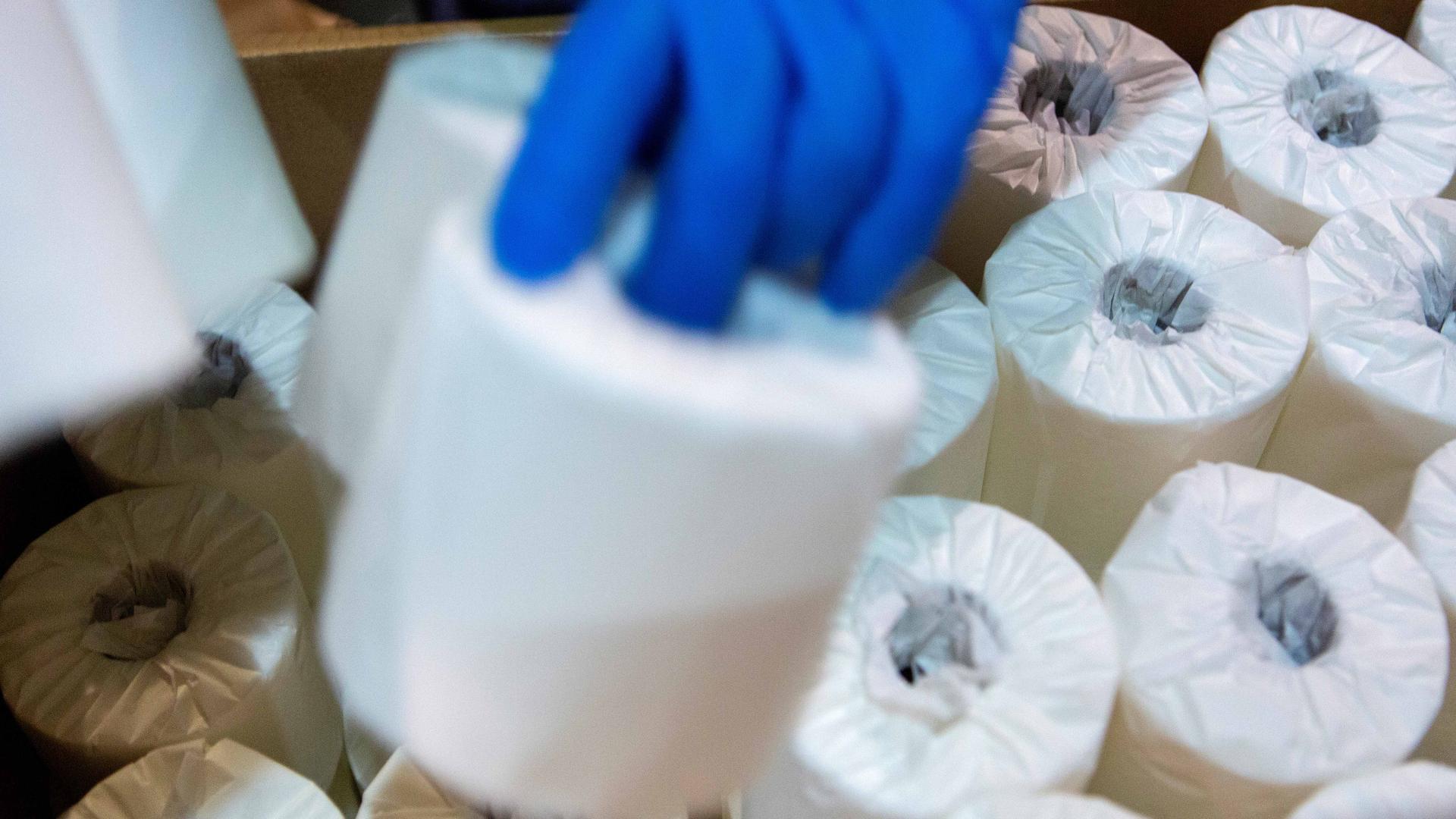‘Sewage surveillance’ may be early warning tool in fight against COVID-19, says one study
A packer for Tissue Plus packer rolls of individually wrapped toilet paper to be shipped in Bangor, Maine, on April 7, 2020.
A new study in the Netherlands has found the coronavirus in sewage — and in one Dutch city, the coronavirus was detected in the sewage system days before any cases were officially confirmed through human testing.
The researchers behind the study, which has not been peer-reviewed, hope their findings can help authorities detect early warning signs for cities if the virus enters or reemerges in a community — especially if testing is limited.
Although the researchers found that the coronavirus can pass through human intestines into sewage systems, early data show that the virus dies quickly — meaning the virus is unlikely to be transmitted via urban sewage systems.
Gertjan Medema, one of the authors of the report, is a microbiologist at the KWR Water Research Institute and a professor of water and health at Delft University of Technology. He spoke to The World’s host Marco Werman about how “sewer surveillance” can be an important tracking tool for communities dealing with the pandemic.
Related: COVID-19: The latest from The World
Marco Werman: I thought, first of all, that the gut was capable of killing the coronavirus. So how do you actually find it in human feces?
Gertjan Medema: Well, it’s actually quite commonly found in human feces. So, the most recent reports that are emerging state that even as high as 50% of people reported with COVID-19 shed the virus in their stool and also the virus can multiply within the intestinal tract — so, not only the lungs but also in the intestines.
So does the virus remain active once it’s in sewage? And are sewage workers at risk?
Yeah, that’s a question that many people have in and around the sewer community — if I can call it that. Researchers that have been looking in stool have been trying to culture the virus out of stools. And there are two reports from China showing that they can do it, but only with a few cases, and a report from Germany that states that they can’t.
So, we think that the effectivity of the virus may not be that high and that the virus is not very robust — so that in the sewer system, which is a hostile environment for this virus, that it will rapidly be inactivated if it’s infectious, still, after being shed.
Of course, sewers are filled with all kinds of nasty bugs, viruses, bacteria, parasites. So there are normal protective measures, protective equipment recommended for certain activities where the exposure risk is high. And all the recommendations are that these normal protective measures also protect against this new virus, — like they do against all the other viruses and bacteria.
How rapidly would the coronavirus die off in sewage? And what are the risks for the general public?
Well, for this coronavirus, too, we don’t have data yet on inactivation in sewer systems. We have inactivation data of what I tend to call its nephew, SARS-1, the virus with the epidemic in 2002-3. There the data suggests that it dies within two days at 20 degrees and within two weeks at 4 degrees in sewer systems. So that is more rapidly than most of the viruses that we already know about [that] are transmitted through the waterborne route. So, we feel that this virus is not particularly robust and does not match with the waterborne viruses that we know can be transmitted through the water route. And so we think that [with] the urban water cycle, the water is not a main transmission pathway for this virus, if at all.
Twenty degrees Celsius — that’s about 70 degrees Fahrenheit. So you studied waste in the city of Amersfoort and found the virus before any cases were reported there in individuals. Is that a clue as to how your discovery might be useful in dealing with the coronavirus?
We feel that with this particular virus, there’s more circulation than we see in the numbers of health surveillance. And that’s why I think sewer surveillance is particularly helpful in understanding this wider circulation of the virus and maybe even earlier than the health surveillance because I think we were five days to a week earlier than the reported case. So if you could use this, then I think you can at least have early warnings to see if the virus enters a community or if it reemerges again, for instance, in the winter.
So I think, yes, sewage surveillance can certainly complement what we do in health surveillance and probably serve as an early warning tool.
I mean, tracking sewage sounds like a crucial way of tracking spread.
Yeah, and a relatively straightforward way. With one sample, we can sample 10,000 or 100,000 people. So, sewer surveillance appears to be pretty sensitive.
This interview has been edited and condensed for clarity.
